It’s a Friday night and I am recovering from a quite exhaustive day at CCBC.
 So here’s how my day went. I drove after 6 am through downtown (I like going toll-free?) to CCBC Essex. There, as a student life ambassador, I assisted visiting BCPS students going to workshops and panel discussions at the Arts, Media, and Communications Career Day. The unpredictable I-can’t-decide-whether-I-want-to-be-Spring-or-Winter weather was nice but, as usual, the freezing wind made it mean. Then I had to attend an ambassador training. Then I drove back to CCBC Catonsville (yep, via the congested city again). I studied a bit for the CCENT certification exam. Then I attended an MSA event when the afterglow subsided. On my way to the parking lot, a CCBC Public Safety van cruised by and a staff who reads my blogs (hi!) wished me a safe night. Then I returned home.
So here’s how my day went. I drove after 6 am through downtown (I like going toll-free?) to CCBC Essex. There, as a student life ambassador, I assisted visiting BCPS students going to workshops and panel discussions at the Arts, Media, and Communications Career Day. The unpredictable I-can’t-decide-whether-I-want-to-be-Spring-or-Winter weather was nice but, as usual, the freezing wind made it mean. Then I had to attend an ambassador training. Then I drove back to CCBC Catonsville (yep, via the congested city again). I studied a bit for the CCENT certification exam. Then I attended an MSA event when the afterglow subsided. On my way to the parking lot, a CCBC Public Safety van cruised by and a staff who reads my blogs (hi!) wished me a safe night. Then I returned home.
It’s after 10 pm. I’m definitely red-eyed and my head hurts.
For no particular reason, I thought about sadness. You know what I can never stop wondering about? It is how much sadness, hurt and pain exists in this world and in our hidden lives. Now there are reasons why we suffer. You may chalk it up to fate or deem it God’s way of putting you through trials. Life has its ups and downs. It just so happens that after a very engaged day, I was mentally and emotionally drained. I know how much I have to do to maintain the pace of my accelerated studies and I know that much remains undone. That “much” includes personal obligations, volunteering activities, class stuff, leadership roles, club activities, work duties, and more.
I tend to think that CCBC is probably filled with thousands of students who have as much as — if not more — what I have to do. I am constantly in awe of how new or returning students balance their personal lives with their academic lives. It is obvious that our personal lives inform our moods, routines, and willingness to… do stuff. If you are a student, there are some things that only you know. So those challenges are mostly yours. And you are on your own.
You know what you are capable of, what you can handle, and — of course — what your limitations are (i.e. what you cannot handle). And in the end, when all is said and done, it is okay. Human beings made weak and fallible for a reason.
So why, after all was over, did I feel sad and pained today? Well, I have my reasons. But I can reassure you that those reasons had nothing to do with the day’s amazing activities.
Arts, Media, and Communications Career Day Highlights
For instance, I was happy to be with my fellow student ambassadors and guide BCPS students explore the Arts, Media, and Communications. Being a Mellon Scholar myself, I love humanities and think that the field is growing at a commendable pace. I was impressed by the workshops and the performance of our students, such as the following musical performances by our CCBC students in just one workshop alone:
And, speaking of arts, here’s a BONUS video I took on February of Baltimore Symphony Orchestra’s beautiful performance at the CCBC Catonsville Center for the Arts on “Baltimore Stories: In Concert”:
It was great hearing the event’s keynote speaker, Professor of Photography, Robert Creamer, passionately and genuinely share about his decades of work that has been widely exhibited and published. For instance, here’s some of his featured work as a honorary Visiting Scholar to the Smithsonian:
I originally met Professor Creamer at a Pathways event @ Catonsville where he was taking free professional photographs of students and encouraging people to join the Photography Club. He is clearly an amazing professor who loves his work as much as he likes teaching students the art of photography.
Here are the pictures of the event. Apologies for the rudimentary photographs (maybe I need to take Prof. Creamer’s class? lol):
- Pizza for Students
- Fries and Chix for Presenters and us Ambassadors
- Spotted the Board Meet Room
- Food for CCBC Board meeting
- Many Chairs for CCBC Board
- Final Remarks
- Final Remarks
- Final Remarks
- CCBC’s Emilie Cherry
- Final Remarks
- Turning it over to Professor Creamer
- Professor Creamer gives his keynote talk
- Professor Creamer gives his keynote talk
- Baltimore Symphony Orchestra’s performance back in February @ CCBC
- Baltimore Symphony Orchestra’s performance back in February @ CCBC
So the Arts, Media, and Communications Career Day went great. I was busy assisting BCPS students going to and from workshops so I did not get a chance to go to the workshops where I could have taken many pictures but I can tell you that the topics discussed included:
- Trying the potter’s wheel to make a ceramic bowl
- Exploring drawing using non-traditional techniques including blind-contour drawing, including blind-contour drawing, tactile drawing techniques
- Exploring the creation of creatures, monsters, and other characters in Sketchbook Pro
- Exploring how multiple game worlds can be designed for a core engine, designing a game world, developing own Flash game
- Utilizing advanced studio techniques to make stunning portraits as students modeled for each other
- Using linocut, a printmaking technique, which is a variant of woodcut in which a sheet of linoleum is used for a relief surface printing process
- Looking at restoring images
- Musical Recital (see above videos for a snapshot) and Audio Production and Piano
- Touring a Digital Video Production space and seeing how studio and field cameras work and finding out the basics
- Using green screen controls in Final Cut and Adobe to see Live Camera Shoot and Green Screening
- Enjoying Modern Dance Master class with CCBC faculty and students
- Enjoying a Jazz dance master class with faculty and students
- Touring theatre facilities and a ready-made set for The Uprising Plays, seeing a lighting workshop in the lighting booth, and a workshop on using Vectorworks, the industry standard 3D software to create virtual set design models in CCBC’s Theatre Design lab
- Taking part in a fun and engaging hour of improvisational acting activities without any prior experience
Then there were also several poster session tables for business partners/professionals, student groups, and CCBC Academic Departments. This included Arts Pathways, ADIM, Sheffield Studios, CCBC Admissions, Art Club, Photo Club with a photo booth, cybersecurity (that’s my field!), and interior design among others.
So you can understand how occupied I was along with other student ambassadors. We were busy making sure that all students were not lost and could go whichever workshop they chose to. In the process, even some of us were very surprised that CCBC offers so many programs of study at the School of Liberal Arts. We were also discussing the recently proposed College Promise program that my fellow student blogger, Cyril, has written about in an open letter to prospective students.
On Sadness, Hurt and Pain – What Arts & Humanities Can Teach Us
Now that I covered the Career Day, let’s jump back to this blog’s main topic! I guess it is human nature to feel burdened, pressured, disappointed, sad, pained, hurt, etc.
Being me, I always look at someone else and wonder what motivates them. What guides them. What makes them happy. What saddens them. What are they going through? Am I allowed to help? Should I? How can I help?
I think it’s very much our innate nature to feel selfish, to take time out for ourselves in the midst of all the hullabaloo and dive into self-reflection. The problem is that some of us are weak and we may not see how our constant somber thoughts can blur the line and make everything seem okay when it really isn’t. Sadness is a transitory mode. But grief never ends.

Grief is the price of love. It grows out of love and it never ends because of love. The clearest example of this is when you lose someone. You grieve for the loss because of love. But as with everything, grief does not signify a never-ending cycle filled with profound sadness. We have to move on. If we fail to, we require support and help. That is where selfishness begins to carry its negative connotations.
The usual excitement, energy, and anticipation in our lives can and will be dampened throughout college. That will happen often for no pointed reason at all. There are plenty of things that will sap our strength and rob us of our joys.
You may be wondering: OK Mohammed, that is all fine. But why do you have to mix sadness with a blog post that also talks about arts and humanities? Isn’t humanities all about dancing and positive communication and worry-free social life?
The short answer is, Not Really.
Arts and humanities are an answer to our selfish concerns. They can help us move beyond our most immediate concerns. How? Well, arts and humanities give us the space and the freedom to express our joys and fears. They enable us to find consolation and be consoled. They allow us to be puzzled and lost. They help us imagine and discover new worlds that we didn’t know existed within us.
And the arts and humanities help us address our grievances that are too often dismissed as an indulgence or a sign of weakness. To the naysayers, I say: no one lives in a vacuum.
Arts and humanities open up a space in a classroom and feel a responsibility for the exchange of ideas, sentiments, passions, and the undecidables. They help us envision that the issues that we face belong not just to us, but were faced by a line of thinkers who were not gods or even sages, but just human beings who struggled with the same problems and thoughts in their hearts and minds. The biggest takeaway from this is that arts and humanities help us connect to other human beings particularly when we lack the experience to “relate” to others.
When we are at a loss for words and too emotionally drained to confide in others, we come to realize that we do have the capacity for dealing with sadness, hurt and pain. Being happy is too wonderfully easy because why waste that time thinking about our problems in that one precious moment? Sadness takes work: it stops us. It forces us to dwell and reevaluate. It helps us feel. Contrary to the “don’t worry, be happy” clichéd mentality, sadness confirms that we want to strive for a better life.
And so, as students of knowledge, sadness will sometimes creep in naturally. When it does, we owe it to ourselves to not fold sadness into depression. We just as much owe ourselves to work with this sadness and not escape from it.
P.S. Apologies for these long blogs but it’s difficult to compress my thoughts into short posts.

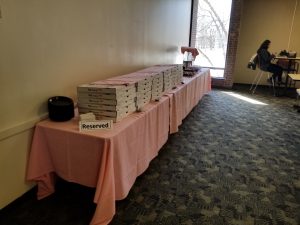
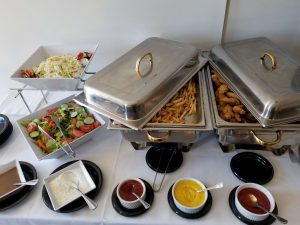
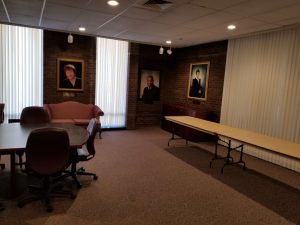

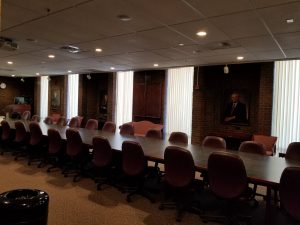
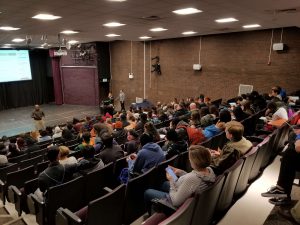
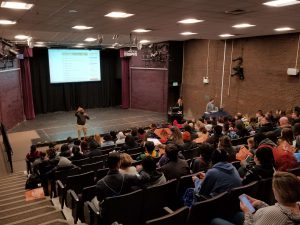

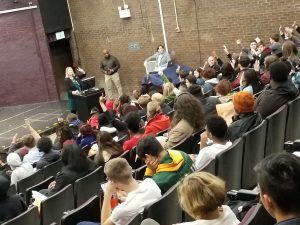
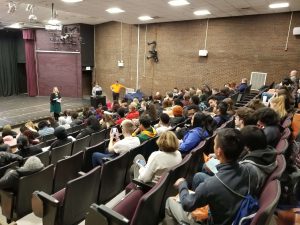


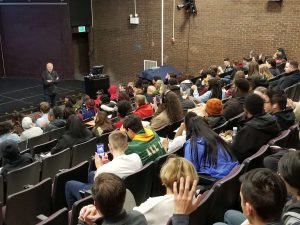

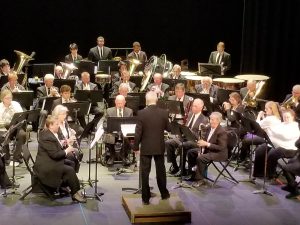




Thank you for the great piece of informative content. I really appreciate your content and efforts. I am sure this is helping tons of people out there just as it helped me. Lots of Best wishes to you. May God keep all of us safe and sound.